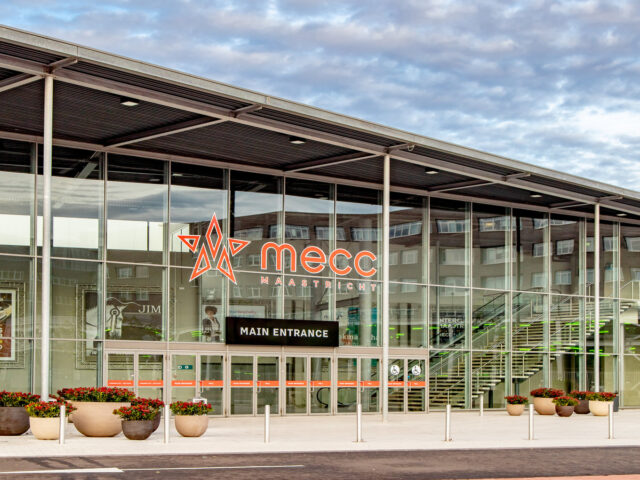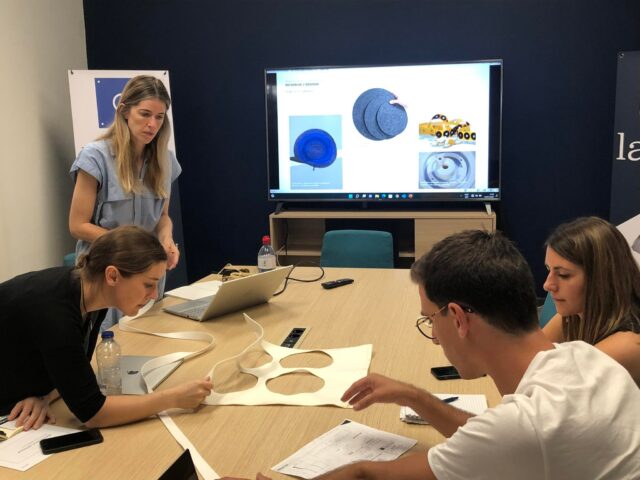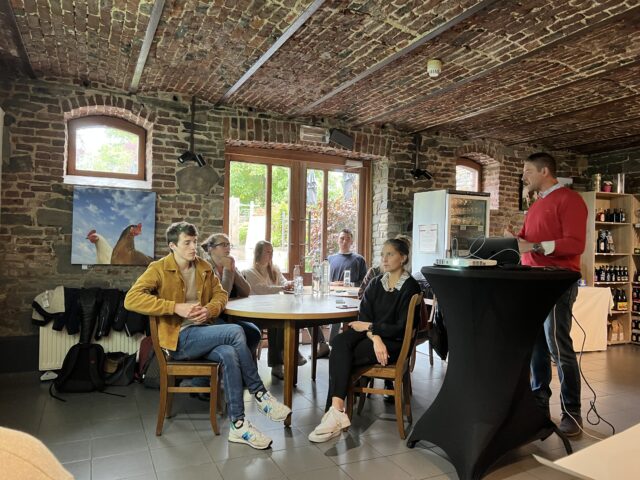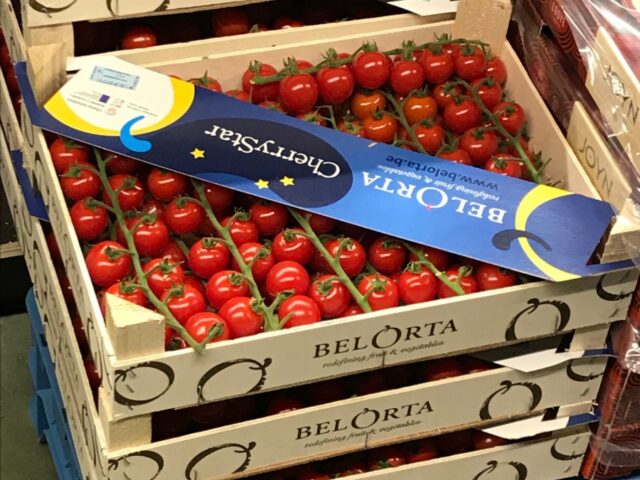In the autumn of 2020, several Limburg companies were selected to participate in an online bootcamp. Mission? Developing original concepts for valorisation based on challenges specific to their activities or sector.
- Veldeman Bedding: manufacturer of high-quality sleep systems wants to anticipate even further the obligations that come with the Extended Producer Responsibility, which stipulates that producers must take back discarded mattresses. What can be done with discarded mattresses?
- BelOrta: Belgium’s largest cooperative fruit and vegetable auction (merger of Mechelse Veilingen, Coöbra and Veiling Borgloon) and European market leader, is struggling with a residual flow of wooden fruit crates that are difficult to recycle because of the mix of materials they are made of.
- Diresco:producer of quartz composite plates for kitchen tablets, among other things, loses a lot of material during the production process. A lot of mixture remains in the machines (500 tonnes per year) and 7,000 tonnes are released every year when polishing the sheets. Quite a challenge.
- Carmans BT: concentrates on the recycling and cleaning of all possible contaminated soils and waste materials and processes this recycled secondary raw material into its Blueblocks. These large concrete blocks could be improved in terms of tensile strength to prevent cracking or crumbling.
- Act&Sorb:a fast-growing, innovative start-up based on a unique recycling solution that tackles the growing problem of non-recyclable MDF waste. The biochar can have many forms and applications, but would it also be useful for green roofs, for example?
- C-mineorganises a large exhibition every year, often international productions, combined with smaller expos… The residual flow of scenographic and production material after the event must be improved, so it must be thoroughly reviewed. The expertise of set designer Deusjevoo is also involved; as an SME, they are active in stand construction and interior design for television studios, exhibitions and events.
The working method proposed to these companies during the bootcamp, is based on the formation of multidisciplinary teams, consisting of Chemistry students (UCLL) and some Professional Bachelors (from Business Management to even Kindergarten education, UCLL), led by professional designers like Birgitt Deckers, Stan Maes, Frederik Delbart, Roel Vandebeek and Frederik Deschuytter and with the occasional input from experts in the field of technology and business development.
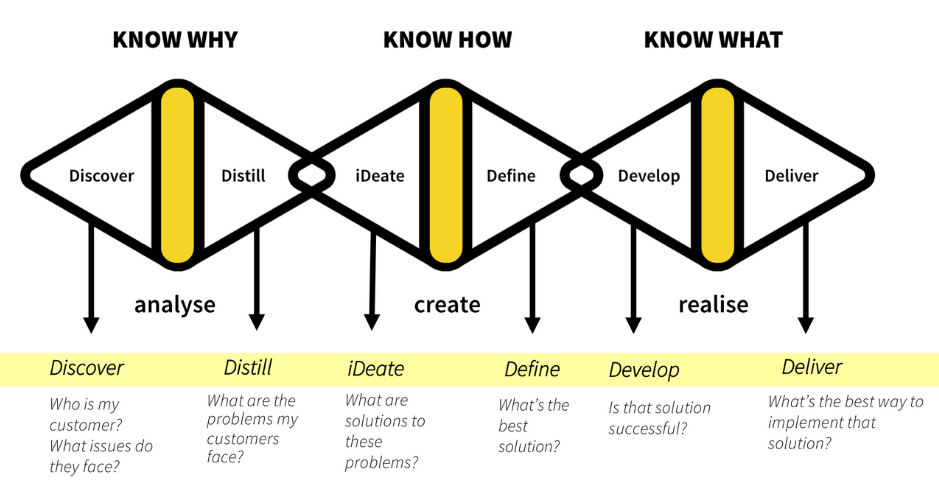
Teams that distinguished themselves during a 3-day course with design thinking tools and methods (co-creation and collective intelligence), which enabled them to identify needs and challenges specific to SMEs and to quickly transform ideas into concrete solutions (creativity with a purpose). The concepts resulting from the teams’ intensive work over three full days were presented to an external jury of circular economy experts.
No fewer than 10 concepts were formulated in the boot camp, six of which were selected for further development into prototypes. This is based on their technical feasibility, commercial potential and design innovation potential.
The (durable ‘Value’) mattresses (made-on-demand) are now packed dust-free in plastic (LDPE and consisting of two layers, so that there is still ‘breathing room’) and delivered by the supplier to the bedroom. To counteract this waste stream of plastic packaging material, a reusable cover can be made from old mattresses. This means a new approach to packaging, new possibilities for branding and communicating the sustainability programme, and the possibility of end-of-life material recovery. The cover is sturdy, completely lockable, equipped with wheels, hygienic (is cleaned every time), easily repairable and recyclable. On the cover, information can be provided for the supplier by QR code, and the cover can be printed for marketing purposes. Concept led by Frederik Delbart.
New, reusable, lightweight fruit/vegetable box made entirely of one and the same sheet material, namely Low Density Fibre. Using CNC or laser, these wooden elements can be optimally cut out, fitted with a click system so that these boxes have the same properties as their predecessors, but are much more durable, easier to repair and, at the end of life, easier to recycle. Concept led by Frederik Deschuytter.
Paraffin or wax-coated paper and cardboard are widely used in the food sector in general, and in the fruit and vegetable sector in particular, mainly for protection during transport and as an intermediate layer as a barrier to grease, water and odour. However, this mixed paper cannot currently be recycled together with paper and is disposed of with residual waste (landfill or incineration). Perhaps a product can be created with this paper, for example, linked to the Walloon concept of making firelighters.
Diresco’s mixing waste can be reused to create new complementary products that match the sheet materials. New products such as light fittings, sinks, fruit bowls, cutting boards, soap holders, etc. could be made in this way. could be made in this way and fit perfectly with the sheet material that ends up in the bathroom or kitchen. Fast processing is necessary, within 24 hours, so companies in the same industrial park must be considered, such as lighting manufacturer… Mixing beads allow products to be made very quickly in exactly the same colour. (Sludge, on the other hand, is more difficult to reuse/ colour is grey and is now put into road construction. They now have to pay 30 to 40 euros per ton to put it away in road construction). Concept led by Stan Maes.
New applications for Biochar, such as a high-tech locally produced green roof solution with 100% bio-based materials and socially responsible production. For example, the seed mat Greensheet could be made from hemp, it is extremely strong, and locally grown. Instead of using a rubber or polymer layer as a carrier for this, a geotextile with flax, hemp and cotton would be used. Flax absorbs moisture very well. Hemp provides the strength, disadvantage flax and hemp is expensive, but cotton as an additional additive could make the overall process cheaper. Concept led byBirgitt Deckers – Studio Planeet.
And what then after this selection?
Here, too, techno/business/design teams will accompany companies on an innovation journey. Some concepts will be developed in cooperation with STEAM students.
In parallel, a new selection of companies will take place in September 2021 for a new boot camp cycle (Innovation Pathway 2021-2022). Are you interested? Then contact Wanderful.stream or fill in the online form so that our partners can contact you.
